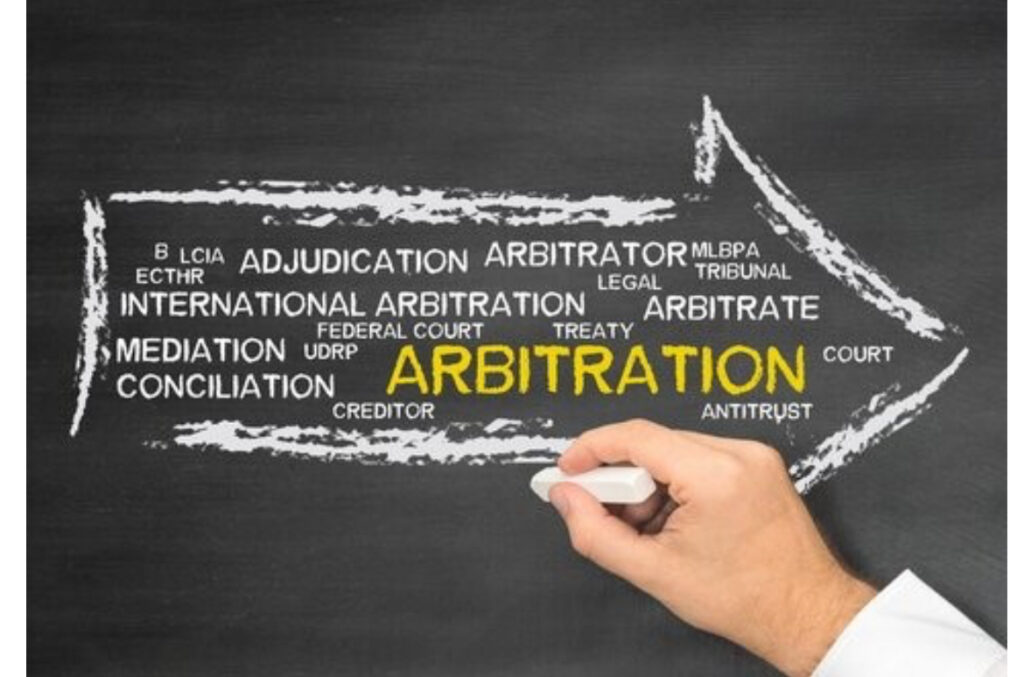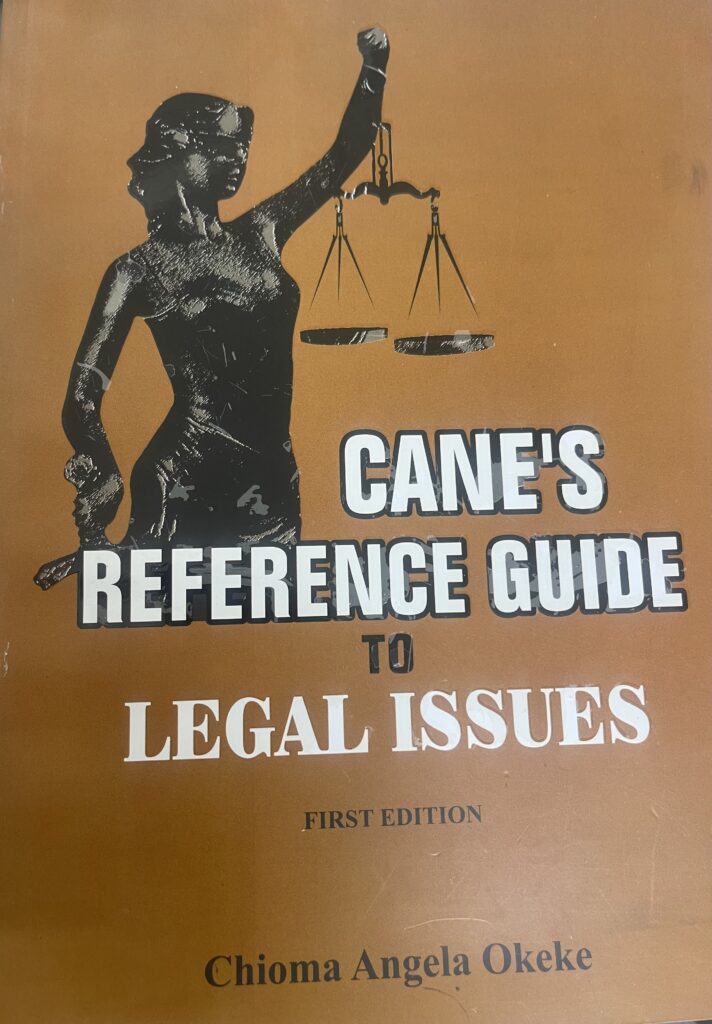
IWOWARI & ORS. vs. AYERITE
(2022)LCN/16920(CA)
PRINCIPLE:
“The Linchpin of the appeal is whether Exhibit D is final, conclusive and binding as a piece of customary arbitration under the aegis of the lower Court. The appellants argued that they rejected the report of the customary arbitrators. The report of the customary arbitrators was admitted in evidence without objection as Exhibit D. It is generally the practice and procedure that when a party or his counsel stands by and allows documents to be tendered in evidence, he cannot turn round to complain against the documents, especially on appeal vide the cases of Shurumo v. State (2010) 19 NWLR (Pt. 1226) 73; John v. State (2011) 18 NWLR (Pt.1278) 353 at 380.
The respondent and the appellants made written presentations at the customary arbitration. None of the parties sought for permission of the arbitrators to present oral evidence. There is no whimper of evidence that any of the parties wanted to put in additional evidence or other evidence verbally or orally and was denied the opportunity to do so by the arbitrators. Hearing can be written or verbal or both depending on what the parties sought for before the body hearing their dispute. For it was held by the Supreme Court in the case of Hart v. Military Governor, Rivers State & Ors. (1976) NSCC 622 at 632 that it is well settled that natural justice does not require that the hearing should be oral relying on the earlier cases of Local Government Board v. Arlidge (1915) AC 120; Adedeji v. Police Service Commission (1968) NMLR 102.
Consequently, I fail to see the woods from the trees in the contention of the appellants that they were not heard by the arbitrators before the arbitrators made the recommendation or report in Exhibit D, when the appellants presented their proposals at the arbitration for consideration by the customary arbitrators.
The lower Court saw, heard and observed the demeanour of the witnesses in the witness-box. To that extent, the appeal turns on the facts believed by the lower Court. The recurring decimal question in such circumstances is not whether an appeal Court if it had been in the position of the lower Court might have come to a different conclusion on the facts derived from the viva voce evidence of the witnesses. Not having seen and heard the witnesses, an appeal Court cannot express itself as being absolutely or mathematically 100% positive on a question of fact as in this case, to depart from and/or reverse the findings of fact based on the credibility of the witnesses pointing irresistibly to voluntary submission of the parties to customary arbitration and acceptance of the result or report of the customary arbitration upon its announcement to the parties by the arbitrators in this case.
It was, for example, held by the Supreme Court in the case of Frederick v. Ibekwe (2019) 17 NWLR (Pt.1702) 467, in reiteration that the primary duty resides with the lower Court as the trial Court to receive all the relevant and admissible evidence which it weighs in the imaginary scale of justice in a civil case to decide which side of the divide the scale tilts or favours. And that it is not the duty of an appellate Court to evaluate evidence on the credibility of the witnesses where the trial Court discharged the primary responsibility of evaluation of the evidence, save if the trial Court failed to do so, in which case an appellate Court may intervene to re-evaluate the evidence to rectify the findings and remove the perverse stain or miscarriage of justice that had afflicted the handling of the evidence by the trial Court, which exception was absent in this case.
The lower Court held in part of its judgment in page 188 of the record that it is the tradition well established in most parts of “this country” that when a person dies, the eldest surviving son becomes the head of the family, but the lower Court went further to qualify and water or mellow down the above holding by stating in these follow-up words-
“Be that as it may, the parties on record, that is, the claimant and the defendants are the administrators and administratrixs of the estate of their late father by the Letters of Administration issued on 16/7/99, which has thus vested in them the power to deal with the estate. The parties to this suit, have agreed to distribute the estate among the beneficiaries. The crux of this matter is how the estate is to be distributed.” (My emphasis).
It can be seen dispassionately from the above excerpt, especially the underlined portion thereof, that the lower Court did not veer off course in the resolution of the central controversy in the case.
The parties consented to the customary arbitration. It was a mode of dispute resolution voluntarily agreed upon by the parties. Arbitration is indisputably acknowledged as an alternative dispute resolution. The customary arbitrators in this case were nominated by the parties based on their well versed knowledge of Nembe native law and custom. Their expertise in Nembe native law and custom was the paramount qualification the lower Court imposed on the appointees to function in the capacity of customary arbitrators in the dispute. The strong and compelling presumption which was not rebutted in the case was that the customary arbitrators at all material times knew Nembe native law and custom with respect to the distribution of the estate of the deceased which required no further proof.
None of the parties was ex facie excluded from the distribution of the estate on ground of the type of marriage the deceased contracted during his lifetime. Had the type of marriage been followed members of the flesh marriage would have got nothing.
The respondent’s case, particularly through his witness, with respect to the acceptance of the arbitration without protest by the appellants at the time it was announced was unshaken under cross-examination and was on that basis unchallenged evidence which established the acceptance of the arbitration by the appellants without ado.
The distribution formula in Exhibit D showed all the parties were taken care of in the distribution of the estate of the deceased which indicated that there was no discrimination in the distribution of the estate in Exhibit D. The complaint of discrimination is, with respect, hollow and is hereby not countenanced.
The notion of the repugnancy doctrine and constitutional injunction against discrimination brought into the case do not therefore tally with the practical result arrived at by the customary arbitrators in Exhibit D. There was also nothing barbaric or uncivilized in the result achieved by the customary arbitrators in Exhibit D. I think, with maximum respects, that it is uncharitable to dub the exercise in Exhibit D as repugnant to natural justice, equity and good conscience and contrary to public policy as well as against the constitutional prohibition of discrimination on ground of sex, circumstances of birth etc as it was the ratio of, not utter exclusion from, the distribution of the estate that was the cynosure of the customary arbitration in Exhibit D.
The lower Court proceeded to hold in part of the judgment in page 189 of the record that it was left with Exhibit D as a guide on the distribution of the estate which it had perused and found weighty and/or of credible value on account of the fact that it was the report of persons jointly nominated by the claimant and the defendants at the lower Court. However, the lower Court modified the recommendation or report in serial Nos. 3 and 4, earlier captured in the discourse. The above approach was by plain implication the rejection of the counter-claim. It is trite that the failure of a plaintiff to file a defence to a counter-claim may not be fatal if the plaintiff succeeds in his claim as his success may render the counter-claim useless as in this case where the appellants sought for a different formula for the distribution of the estate of the deceased from the parameter contained in Exhibit D upon which the respondent’s case was anchored; therefore no judgment could have been given for the appellants on the counter-claim without considering the evidence led in respect of the facts pleaded by the respondent vide Dabup v. Kolo (supra).
I respectfully conclude that the exercise in Exhibit D was all inclusive and bore the commendable trappings of peaceful and tranquil quest for domestic synergy and cohesion to hold the family of the deceased together and prevent it from falling apart. Had the respondent cross-appealed on the modification of the customary arbitration award in Exhibit D, much might have been held in favour of leaving the distribution of the estate as contained in Exhibit D intact; and it is on this note that I close the discussion on the coda that the appeal lacks substance and would dismiss it and affirm the decision of the lower Court (Iyayi, J.). Parties are to bear their costs. I commend both learned counsel for the industry put in the respective briefs.” Per IKYEGH, JCA.



